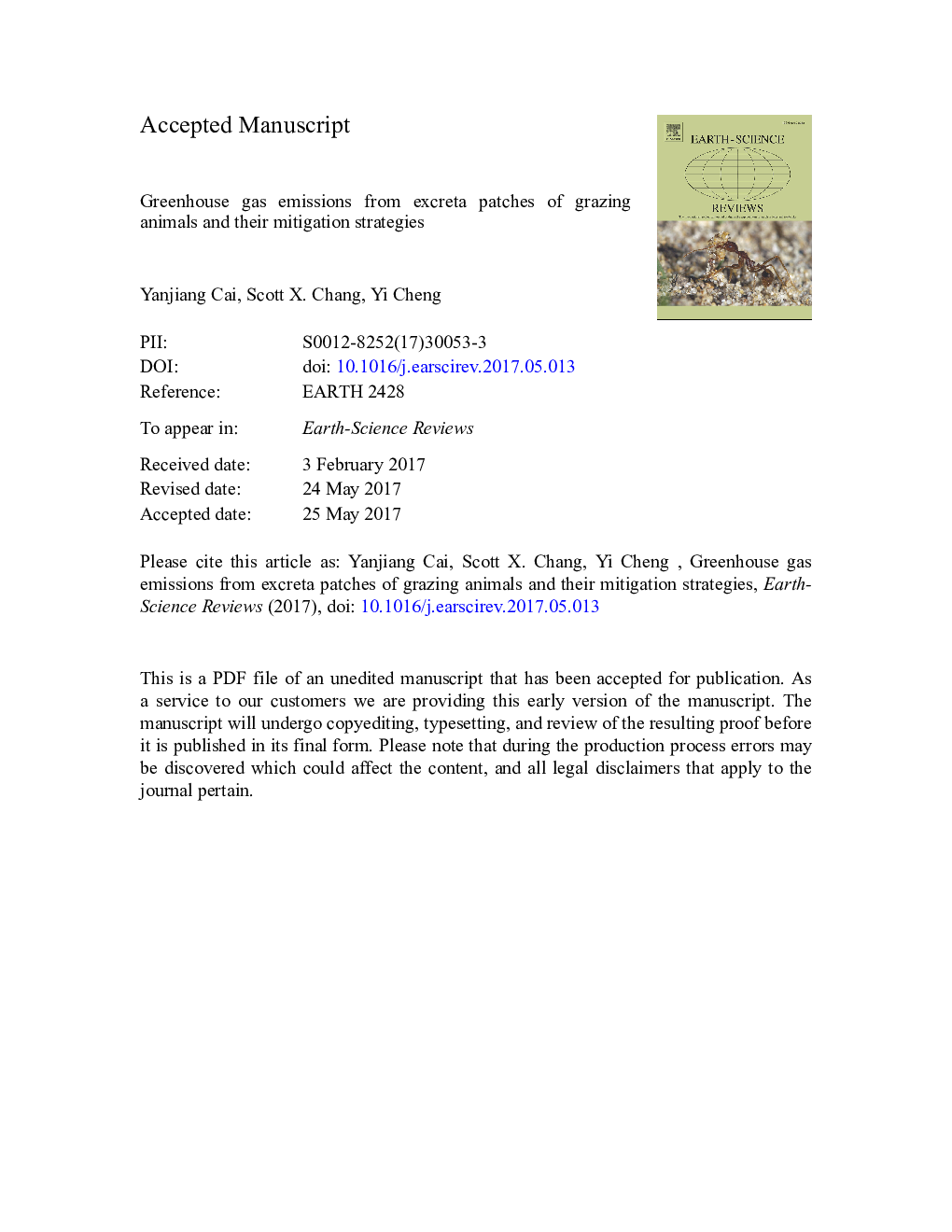| کد مقاله | کد نشریه | سال انتشار | مقاله انگلیسی | نسخه تمام متن |
|---|---|---|---|---|
| 5785077 | 1639931 | 2017 | 63 صفحه PDF | دانلود رایگان |
عنوان انگلیسی مقاله ISI
Greenhouse gas emissions from excreta patches of grazing animals and their mitigation strategies
ترجمه فارسی عنوان
انتشار گازهای گلخانه ای از تکه های قرص های حیوانی و راه های کاهش آن
دانلود مقاله + سفارش ترجمه
دانلود مقاله ISI انگلیسی
رایگان برای ایرانیان
کلمات کلیدی
موضوعات مرتبط
مهندسی و علوم پایه
علوم زمین و سیارات
زمین شناسی
چکیده انگلیسی
More livestock is being raised globally (increasing from 3.55 billion in 2000 to 4.24 billion in 2014 for cattle, sheep, goats and horses, based on 2017 FAO data) due to the increasing demand for livestock products, which inevitably results in increased excreta (urine and dung) deposition onto grasslands. Urine and dung patches are hotspots for emissions of the three principal greenhouse gases (GHGs): nitrous oxide (N2O), methane (CH4) and carbon dioxide (CO2) from grazed grasslands; however, the underlying mechanisms controlling GHG emissions are still not well understood and few strategies have been developed to mitigate such GHG emissions. Here, we review research on GHG emissions from excreta patches and propose possible mitigation strategies. The emission of N2O from excreta patches is mainly caused by increased nitrification and denitrification, in association with the increased abundance of ammonia-oxidizing bacteria (AOB) and denitrifying bacteria. Emission of N2O increases after urine deposition regardless of the type of urine (net increases ranged from 1.06 to 6.51 kg N haâ 1), while it increases (2.42 ± 1.95 kg N haâ 1; mean ± 95% confidence interval) only after cattle dung deposition, which also increases CH4 (11.8 ± 5.32 kg C haâ 1) and CO2 (893 ± 693 kg C haâ 1) emissions. The effect of urine on CH4 emission is complex and further research is required. The application of dicyandiamide (DCD) is effective in reducing N2O emissions from both cattle urine (â 4.24 ± 1.10 kg N haâ 1) and dung (â 0.66 ± 0.61 kg N haâ 1) patches. In urine patches, DCD can reduce AOB population size, but does not influence the denitrifying bacteria population size. Diet manipulation and grazing management are also potential measures for mitigating GHG emissions from excreta patches. Further research is required to ascertain the overall emission of GHGs from excreta patches at the ecosystem level and to explore strategies for the sustainable development of grazed grassland ecosystems.
ناشر
Database: Elsevier - ScienceDirect (ساینس دایرکت)
Journal: Earth-Science Reviews - Volume 171, August 2017, Pages 44-57
Journal: Earth-Science Reviews - Volume 171, August 2017, Pages 44-57
نویسندگان
Yanjiang Cai, Scott X. Chang, Yi Cheng,
